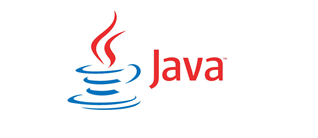Ascio Web Service v2
Java Axis CreateOrder - Domain_Details_Update
Updating the next autorenew period will prompt the systems to generate an autorenew order (upon
expiry date) based on the period stated in the latest domain details update order.
This dictates that the default autorenew period no longer applied once a TLD is enabled with this
command. Privacy and proxy can be updated with the Domain-Details-Update. For more information please look at this If the domain is queued by a queue-order, the phase can be changed with Domain Details Update - Phase. It is only possible to update domain property values. In order to update domain-objects please use these commands:RenewPeriod
Privacy/Proxy
Queue Phase
Other domain objects

Response CreateOrder(string sessionId,Order order)Response codes
| ResultCode | Message | Value |
|---|---|---|
| 200 | Order validated | |
| 200 | Order received | |
| 400 | Order not validated | Messages |
| 401 | Authorization failed | |
| 405 | Access denied |
CreateOrder Request
| Property | Description |
|---|---|
| sessionId | Example: o58t9fjgw9bjarp6q7byv13e |
| order |
CreateOrderResponse
| Property |
|---|
| CreateOrderResult |
| order |
| Property | Value |
| OrderType | Domain_Details_Update |
|---|
Java Axis example
package ascio.v2.examples;
import com.ascio.www._2007._01.*;
import com.ascio.www._2007._01.holders.*;
import ascio.lib.*;
public class Domain_Details_UpdateExample {
public static Response main() {
AscioConfig config = new AscioConfig();
V2 env = config.getTesting().getV2();
Extension extension = new Extension();
extension.setKey("Title");
extension.setValue("Mr.");
ExtensionsExtension extensions[] = new ExtensionsExtension[]{extension};
PrivacyProxy privacyProxy = new PrivacyProxy();
privacyProxy.setType(PrivacyProxyType.None);
privacyProxy.setPrivacyAdmin(false);
privacyProxy.setPrivacyTech(false);
privacyProxy.setPrivacyBilling(false);
privacyProxy.setExtensions(extensions);
There are 2 types of proxy: Privacy: Only the e-mail address is replaced. Proxy: Everything is replaced with proxy data.The admin e-mail is replaced with a generated e-mail. In case of proxy all data is replaced.The tech e-mail is replaced with a generated e-mail. In case of proxy all data is replaced.The billing e-mail is replaced with a generated e-mail. In case of proxy all data is replaced.
Domain domain = new Domain();
domain.setDomainName(env.getProperties().getProperty("DomainName"));
domain.setRenewPeriod(1);
domain.setQueueType("QueueTypeTest");
domain.setPrivacyProxy(privacyProxy);
domain.setDiscloseSocialData("true");
The RegPeriod for the next AutoRenew that is spawned by the backend. When the domain is renewed by a AutoRenew order, it will be for RenewPeriod years.This is for QueueOrders. You can set the Phase here. (Phase1, Phase2, Phase3)
Order order = new Order();
order.setType(OrderType.Domain_Details_Update);
order.setDomain(domain);
try {
/**inputs holders*/
OrderHolder orderHolder = new OrderHolder(order);
Response response = env.getClient().createOrder(env.getSessionId(), orderHolder);
System.out.println("CreateOrder ResultCode\t: " + response.getResultCode().toString());
System.out.println("CreateOrder Message\t: " + response.getMessage());
System.out.println("Created OrderId\t\t: " + orderHolder.value.getOrderId());
if(response.getResultCode() == 400) {
for( String value : response.getValues()) {
System.out.println("Error: " + value);
}
}
env.repeatSync(orderHolder.value.getOrderId(), 10);
return response;
} catch (Exception e) {
System.out.print(e);
}
return new Response();package ascio.v2.examples;
import com.ascio.www._2007._01.*;
import com.ascio.www._2007._01.holders.*;
import ascio.lib.*;
public class Domain_Details_UpdateExample {
public static Response main() {
AscioConfig config = new AscioConfig();
V2 env = config.getTesting().getV2();
Extension extension = new Extension();
extension.setKey("Title");
extension.setValue("Mr.");
ExtensionsExtension extensions[] = new ExtensionsExtension[]{extension};
PrivacyProxy privacyProxy = new PrivacyProxy();
privacyProxy.setType(PrivacyProxyType.None);
privacyProxy.setPrivacyAdmin(false);
privacyProxy.setPrivacyTech(false);
privacyProxy.setPrivacyBilling(false);
privacyProxy.setExtensions(extensions);
Domain domain = new Domain();
domain.setDomainName(env.getProperties().getProperty("DomainName"));
domain.setRenewPeriod(1);
domain.setQueueType("QueueTypeTest");
domain.setPrivacyProxy(privacyProxy);
domain.setDiscloseSocialData("true");
Order order = new Order();
order.setType(OrderType.Domain_Details_Update);
order.setDomain(domain);
try {
/**inputs holders*/
OrderHolder orderHolder = new OrderHolder(order);
Response response = env.getClient().createOrder(env.getSessionId(), orderHolder);
System.out.println("CreateOrder ResultCode\t: " + response.getResultCode().toString());
System.out.println("CreateOrder Message\t: " + response.getMessage());
System.out.println("Created OrderId\t\t: " + orderHolder.value.getOrderId());
if(response.getResultCode() == 400) {
for( String value : response.getValues()) {
System.out.println("Error: " + value);
}
}
env.repeatSync(orderHolder.value.getOrderId(), 10);
return response;
} catch (Exception e) {
System.out.print(e);
}
return new Response();https://aws.demo.ascio.com/2012/01/01/AscioService.wsdl (OTE)
https://aws.ascio.com/2012/01/01/AscioService.wsdl (Live)
Please configure the IP-Whitelisting in the portal/demo-portal.